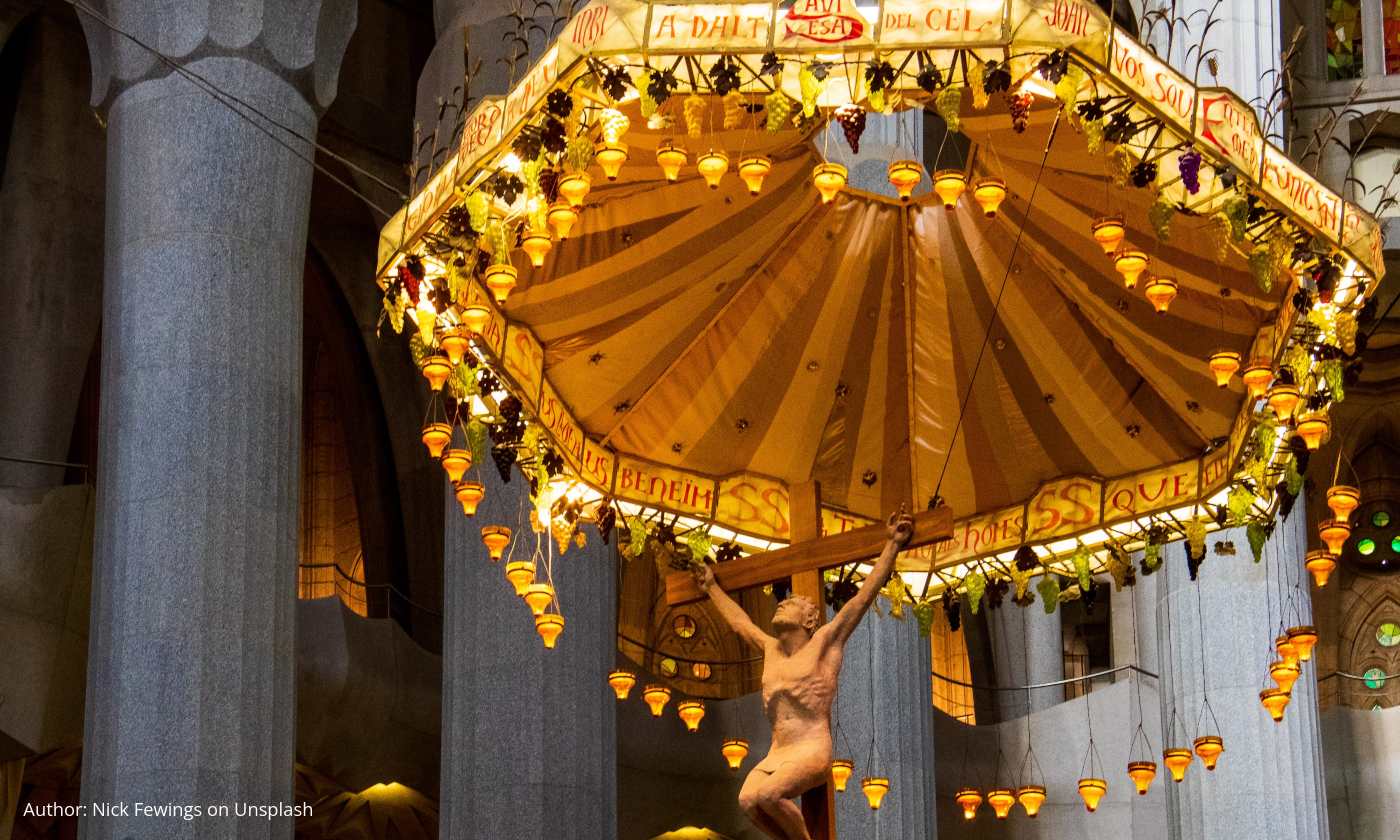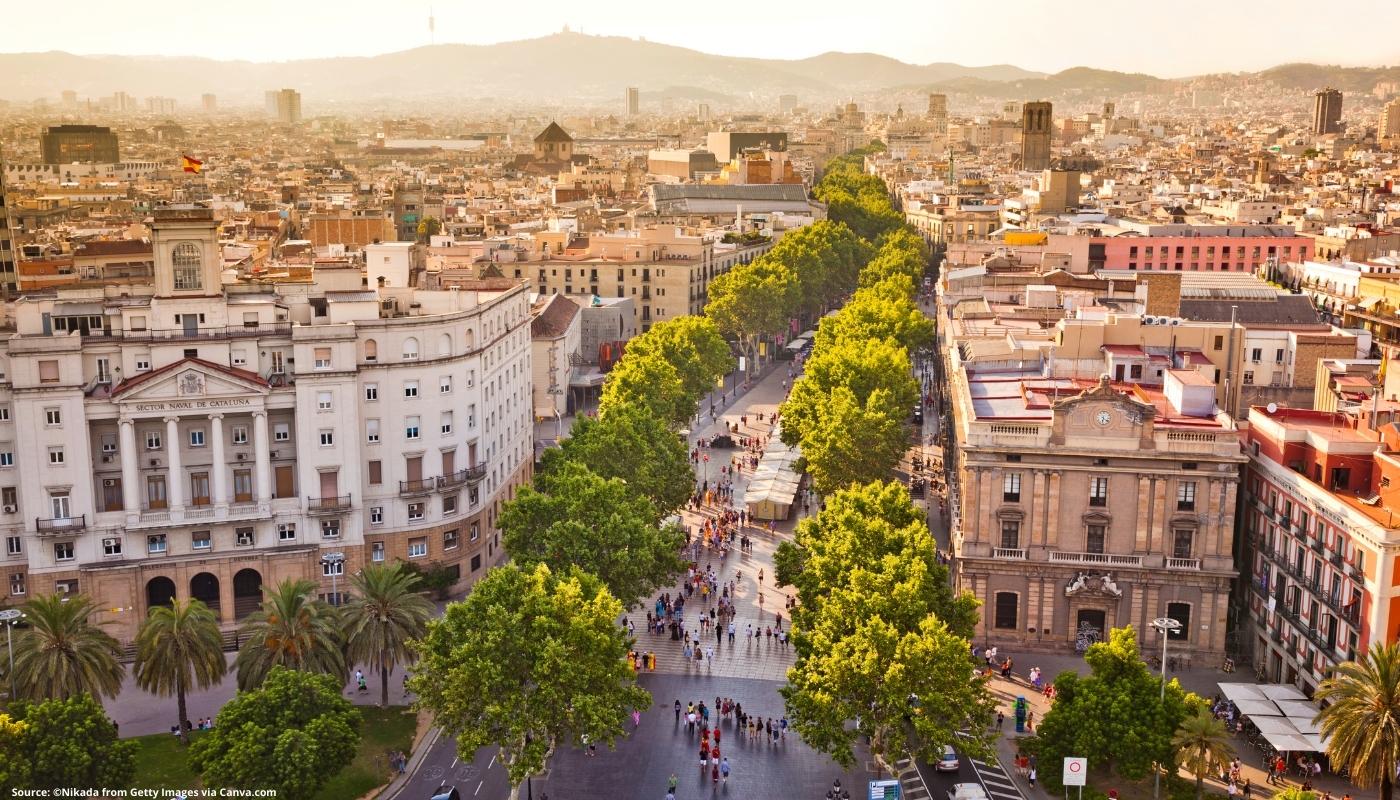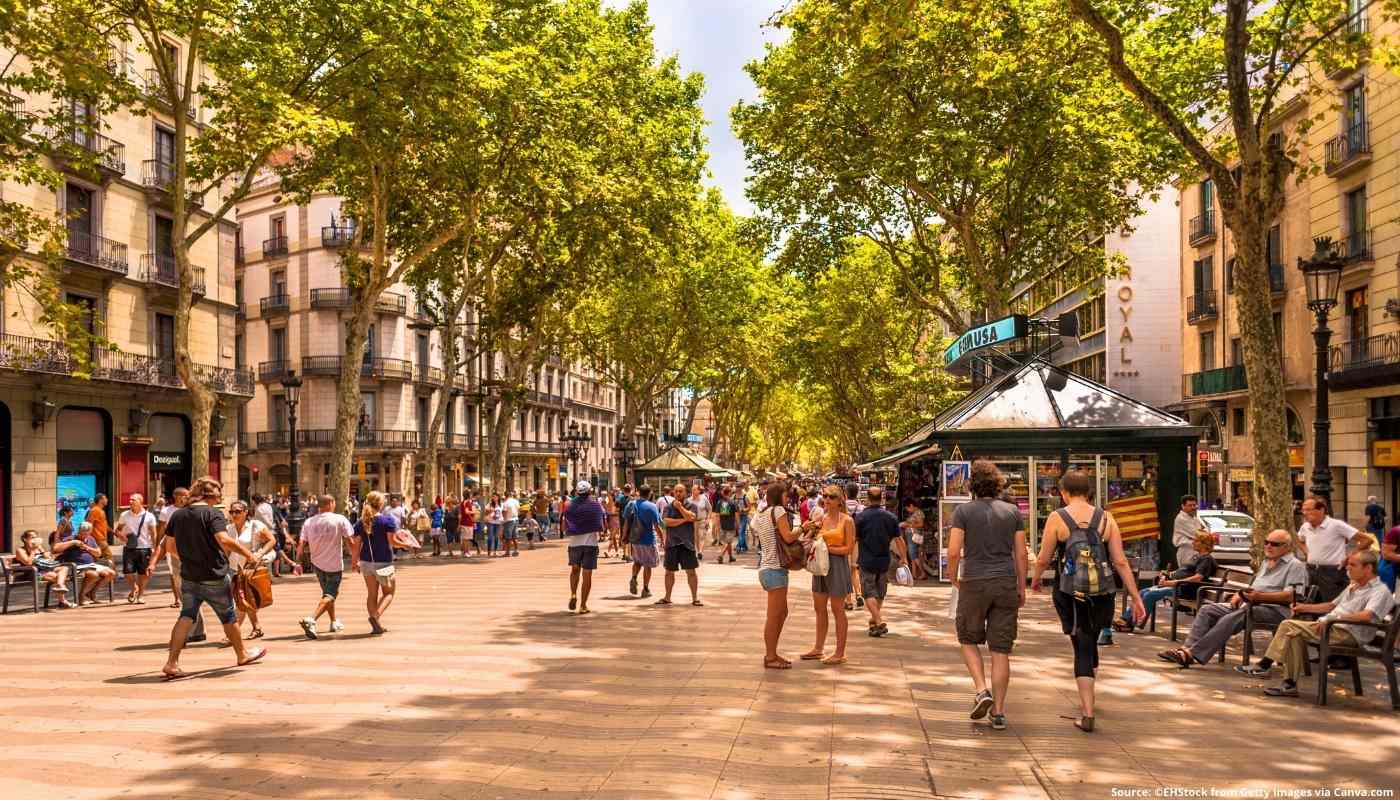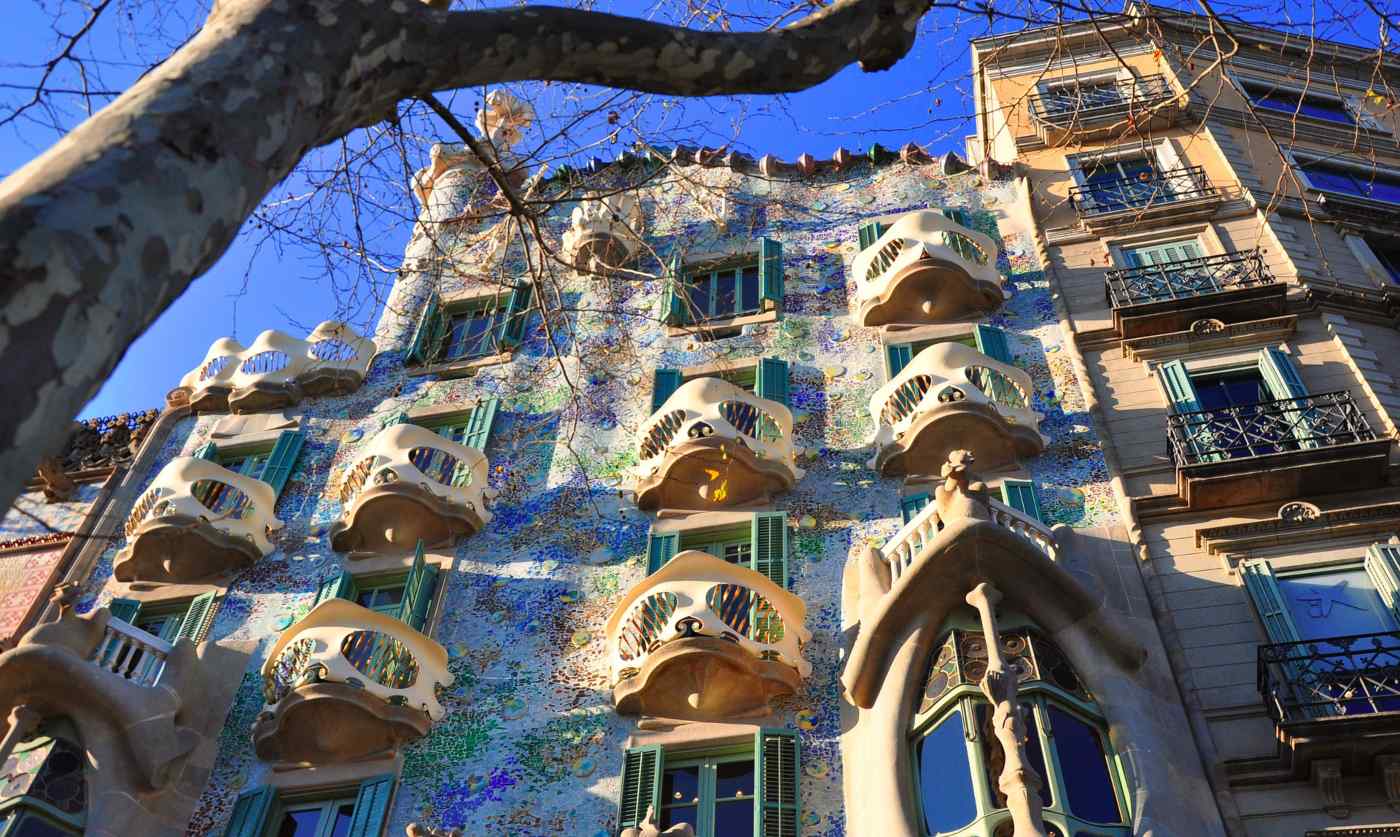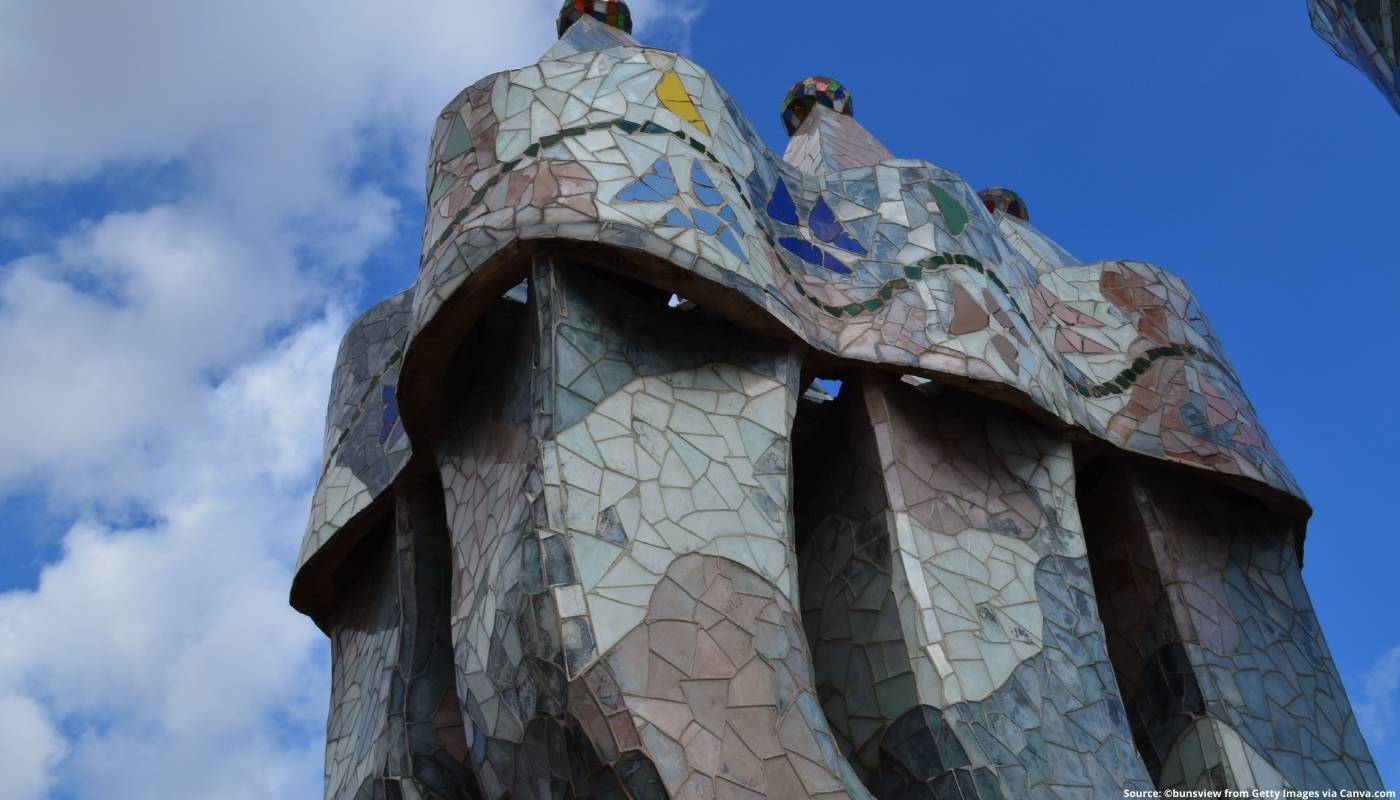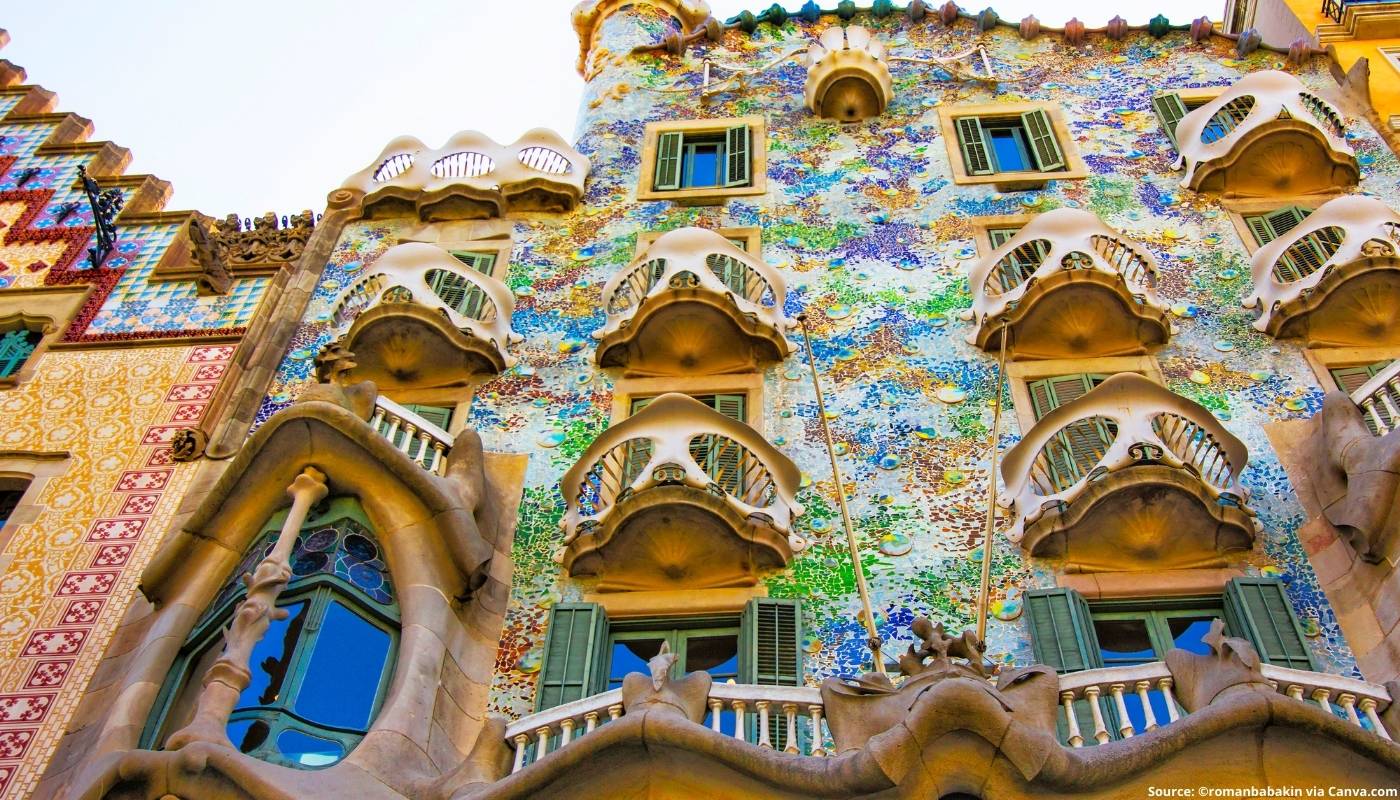The most important information about Barcelona
- History of Barcelona - The city of Barcelona was founded by the Romans, who set up a colony called Barcino at the end of the 1st century BC, but the first human settlements date back to Neolithic times. During the Industrial Revolution, Barcelona became an important industrial center, and because of that, it increased its wealth. It was a part of the First French Empire from 1812 until Napoleon’s defeat. The city was mostly urbanised because of the Exposición Universal de Barcelona in 1888. During Franco’s time, the use of Catalan language was forbidden and the autonomous institutions of Catalonia were abolished. Still, Barcelona remained the second-largest city in Spain and the heart of the region. Today it is still an essential Spanish city with an increase of international reputation as a tourist destination.
- Geography and time zone - Barcelona is located on the northeast coast of the Iberian Peninsula, facing the Mediterranean sea. It is the capital and largest city of the autonomous community of Catalonia. Barcelona is located on a plain that is limited by the mountain range of Collserola, the Llobregat River to the southwest, and the Besòs river to the north. Time zone of Barcelona is GMT +1.
- Climate - Barcelona has a hot-summer Mediterranean climate, with mild winters and warm to hot summers. The rainiest seasons are autumn and spring, and there is a short dry season in summer. There is a difference in temperature in the city limits and outside of the urbanized area.
- Demography - Barcelona has over 1.62 million habitants. It is one of the most densely populated cities in Europe. There are 73 neighborhoods in the city. The largest groups of foreign residents in Barcelona are from Italy, China, Pakistan, France, and Morocco. Most of the inhabitants are Roman Catholics, while over 300 thousand people are Muslims.
- Tradition and culture - What is this city unique for? - Barcelona is unique for its architecture, especially from the architect Antoni Gaudí. It houses Gaudí’s best work that attracts millions of visitors. It is also home to the football club Barcelona and its stadium Camp Nou. Barcelona’s Gothic Quarter is a place that you must visit to experience the Gothic style. The city is known for its beaches and nightlife.
City Travel Tips for Barcelona
- Official Language and other languages spoken - Official languages in Barcelona are Catalan and Spanish, and the majority of the residents are fully bilingual. Other most spoken languages in the city are Berber, Arabic, Bengali, and Urdu.
- Entering the city: Procedures and requirements - There are no special procedures and requirements when you’re entering Barcelona, but when you’re entering Spain, you need your identity papers valid for at least three months. If you’re staying for longer than 90 days, you need a visa.
- Money Tips - Currency - The currency that is used in the whole country is euro. Barcelona is a great city to walk in because it has a lot of wide pedestrian streets, so you can save money by not using public transport or taxis. You could also rent a bike and buy a T-10 ticket for ten rides. Take advantage of the free events and research when you can visit sights for free. You can also find free city tours. Apart from that, there are three Barcelona tourist cards: Barcelona Card, the official tourist pass that includes unlimited public transport and free access to over 20 top attractions; Articket Barcelona, the Barcelona Museum Pass that offers free entry to six of the most important art museums and galleries in Barcelona; Barcelona Pass, a sightseeing pass that offers free access to most of the main tourist attractions in Barcelona.
- Country Dialing Code Prefix - The dialing code prefix for the whole country is +34.
- Police, ambulance, fire brigade: 112.
- Police: 091.
- Local Police: 092.
- Fire brigade: 080.
- Accident / Ambulance: 061.
- Barcelona Official Guide - it contains information about the places you can go, offline maps, maps of the metro network, practical information about the city, and more. You can download it in Spanish, English, French, Italian, and German.
- BCN Paisatge - an app that offers a selection of shops that have maintained their original characters over the years.
- Barcelona Restaurants - the official guide of Barcelona restaurants that offers information on the different places where you can eat various cuisines.
- Spotted by Locals - an app where the locals make the recommendations of what you should visit. They talk about their favorite places, restaurants and activities.
- Citymapper - an app that offers you information about the different ways to move around the city. You can see the timetable of the metro, train or bus offline.
When to visit Barcelona?
How to get to Barcelona?
- Plane - Barcelona has three airports - El Prat de Llobregat Aeropuerto, Reus International Airport, and Girona-Costa Brava Airport.
- Train - the main railway station in Barcelona is Barcelona Sants, at the Plaça dels Països Catalans. It is operated by Renfe Operadora and SNCF. It has three lines: Madrid-Barcelona, Lleida-Manresa-Barcelona, and Madrid-Barcelona-Figueres.
- Bus - the main Bus terminals are Barcelona-Sants and Estació Nord. 24 different bus companies operate out of these terminals. Some of them are Eurolines and Alsa.
- Car - depending on where you’re coming from, you can reach Barcelona via highways C-33, C-58, B-10, and B-20.
Activities for tourists in Barcelona
- Tapas and Wine Experience Small-Group Walking Tour - on this tour you will learn about Catalonian and Spanish food traditions in Barcelona while walking and having wine and tapas. The price of this tour is 75 euros per person and you can book it on the Barcelona Local Experiences website.
- Montserrat Tour with Lunch and Gourmet Wine Tasting - a tour outside of Barcelona where you can have a Catalan lunch and a wine-and-cheese tasting session at Oller del Mas, a 10th-century castle. The price is 74.95 euros per person and you can book it on the Castle Experience website.
- Paella Cooking Experience with a Professional Chef and Bottomless Wine - a cooking class led by specialist chefs where you can learn how to make paella, a traditional Spanish food. It is available in English and Spanish. The price is 85 euros per person and you can book different types of cooking classes on the Paella Club website.
- Epiphany - the arrival of the three kings to the Messiah’s manger on the 5th/6th of January. People exchange gifts on these days, and there is a grand parade, “Cavalcada dels Reis” with acrobats, clowns and elves.
- Carnival - it is held in February/March. A grand parade with people dressed in fancy clothes, floats and fireworks goes down Barcelona’s main streets. It is known as La Gran Rua de Carneval.
- Dia de Sant Jordi - it is held on the 23rd of April. It is the day when men should purchase roses for women, and women should buy books for men. That’s why Las Ramblas have a lot of roses and books for sale during that holiday.
- Formula One Spanish Grand Prix - it is organized in May at the Circuit de Catalunya in Montmelo, which is 20 km outside Barcelona.
- Primavera Sound Festival - this alternative rock and dance festival is held in May/June in Parc del Forum. During that time, additional concerts are organized in nightclubs and public spaces around the city.
- Passeig de Gracia - it is the best solution when it comes to cheap shopping and his street includes major clothes shopping chains like Zara, H&M and Mango.
- Portal del Angel - a place for high end shopping that has shops like Dolce & Gabbana, Armani and Gucci, and jewelry and accessory shops like Bvlgari, Cartier, Rolex, Chanel, and Swarovski.
Tourist attractions in Barcelona
- La Sagrada Familia - the Basílica de la Sagrada Familia is one of the symbols of Barcelona. It was designed by the Spanish architect Antoni Gaudí whose work on the building is part of a UNESCO World Heritage site. The Basilica is still not finished and it is located in the Eixample district. La Sagrada Familia is open Monday through Sunday from 9 am to 6 pm. Tickets can only be purchased online on the basilica’s website. The price of an individual ticket is 26 euros or 27 euros for a guided tour. The tickets are a contribution to the construction of the basilica.
- Park Güell - another Antoni Gaudí design. It is a park located on Carmel Hill, in La Salut. It was built from 1900 to 1914 and was officially opened as a public park in 1926. It is a UNESCO World Heritage Site under “Works of Antoni Gaudí”. It is one of the largest green spaces in Barcelona. The Park is open all year round from 9:30 am to 5:30 pm. The general ticket is 10 euros, for children from 7 to 12 it is 7 euros, while for children from 0 to 6 the entrance is free.
- Casa Milà - a Gaudí masterpiece that houses an arts venue. It is popularly known as La Pedrera or “The stone quarry”. It is a modernist building that was built between 1906 and 1912. La Pedrera is a UNESCO World Heritage Site and it doesn’t have any sharp edges, it’s a constant curve, both outside and inside. It was inspired by nature. Casa Milá is open from 9 am to 6:30 pm, and the general ticket is 24 euros. For children from 7 to 12 years, it’s 12 euros, while for children from 0 to 6 years the entrance is free.
- Casa Batlló - another Gaudí masterpiece. It is located in the center of Barcelona. Casa Batlló is a redesign of the previously built house. The local name for the building is Casa dels ossos, which means “House of bones” because it has skeletal organic quality. It is also an UNESCO World Heritage Site. Casa Batlló is open from Tuesday to Thursday from 9 am to 6:30 pm, and from Friday to Monday from 9 am to 8 pm. The general ticket is 35 euros if you buy it online, and 39 euros if you get it at the box office. You can buy tickets on the house’s website.
- Las Ramblas - famous tree-lined pedestrian street in central Barcelona that stretches for 1.2 km and that connects the Plaça de Catalunya with the Christopher Columbus Monument at Port Vell. It is prevalent among the tourists because it has everything - from cafes and restaurants to hotels, souvenir kiosks and stores. Las Ramblas is the best place to buy flowers. You can often see street performers there and you can hear music. Las Ramblas is also home to a mosaic from the famous artist Joan Miró.
- Picasso Museum - a museum that holds 4251 works from the famous 20th-century Spanish artist Pablo Picasso. In it you can see the permanent exhibition that shows the artistic evolution in his work. The museum is housed in five adjoining medieval palaces and it is open from Tuesday to Sunday from 10 am to 7 pm and closed on Mondays. The general price is 12 euros. Free-of-charge times are Thursday afternoons from 4 to 7 pm, first Sunday of each month and on 12th February, 18th May and 24th September which are Open Door days.
- Cathedral of Barcelona - the Cathedral of the Holy Cross and Saint Eulalia is a Gothic cathedral and the seat of the Archbishop of Barcelona. It was built from the 13th to 15th centuries. It is located in Barcelona’s Gothic neighborhood. Visiting hours for cultural and tourist visits during the weekdays are from 10:30 am to 6:30 pm, and on Saturdays and festive vigil, they are from 10:30 am to 5 pm, while on Sundays it’s closed for that type of visit. The ticket price is 9 euros and you can get it on the website of the Cathedral.
- Palau de la Música Catalana - a concert hall designed in the Catalan modernista style and built from 1905 to 1908. It is a UNESCO World Heritage Site along with Hospital de Sant Pau. Opening hours are from 10 am to 3:30 pm. The Concert hall offers a possibility of a self-guided tour of 10 euros and a guided tour of 18 euros. You can buy tickets on their website.
- Camp Nou - a football stadium that opened in 1957 and since then it has been the home stadium of FC Barcelona. It is the largest stadium in Spain and Europe. It is located about 5 km from Barcelona’s historic city centre. The stadium offers various tours, and the most popular one is the basic tour that is 29.5 euros and includes the visit to the Barça Museum and the tour of Camp Nou. You can buy the tickets online on FC Barcelona’s website.
- Montjuïc - a hill that has a relatively flat top that overlooks the harbour. Its name means “Jewish Mountain”. It houses various tourist attractions: the Palau Nacional, which has been home to the National Art Museum of Catalonia since 1934, Magic Fountain, that is situated below the Palace, the Olympic stadium, and a grand staircase that leads up from the foot of Montjuïc to the Palau Nacional. It is best to visit the Magic Fountain at night during the summer weekends because it has performances every half-hour.
Accommodation in Barcelona
- Hotels - There are all types of hotels - from 1 star to 5 stars. Prices vary from 40 euros to 1390 euros per night. One of the top reviewed hotels is Seventy Barcelona, located at the border of the Eixample and Gracia. It also has a spa within it where you can relax.
- Rooms and Apartments - If you want a whole apartment to yourself, Barcelona has a good selection of them. Prices are from 50 euros to 1550 euros, depending on the type and location of the apartment.
- Hostels and budget accommodation - If you’re on a budget, you can rent out a bed in one of Barcelona’s hostels. Prices vary from 12 to 87 euros. There are rooms with up to 12 beds with private or shared bathrooms.
Best restaurants in Barcelona
- Nou Celler serves Spanish, Mediterranean and European cuisine. You should try crema Catalana, a traditional dessert made from milk and cinnamon.
- Bar del Pla - a tapas bar where you can try stuffed courgette leaves, salt cod and smoked sardines.
- Botafumeiro - a restaurant where you can try fish from markets of Catalonia and Galicia.
- Las Ramblas with Boadas cocktail bar, the Kiosk La Cazalla and Old Irish Pub.
- The Gothic Quarter with Milk Bar, Sugar and Flaherty’s.
- El Born with Miramelindo and Clubhaus.
- El Raval with Ambar and La Whiskeria Cocktail Bar.
- One of the most visited and cheap cervecerías is 100 Montaditos, a place where you can try a variety of small sandwiches and enjoy beer or sangria.
Public transport in Barcelona
- Buses, Metro and Trams - On the official website of the public transport in Barcelona, you can find maps for both bus and metro networks and the operating hours and tickets and fares. The single tickets that you purchase can be used on buses and metros, while the monthly ones can be used on all operators in the Integrated Fare System, which includes buses, metro, trams, FGC and Rodalies. A single card is 2.40 euros.
- Cycling - Barcelona is the most bike-friendly city on the Mediterranean. It has a lot of cycling tracks. You can rent a bike all across the city for as low as 5 euros a day.
- Taxi - If you want to use this type of transportation, you can find various taxi services. Taxis in Barcelona have a standardized charging system based on a taximeter. Some of the taxi companies are Taxileader, Radio Taxi 033 and Taxi Ecològic.











